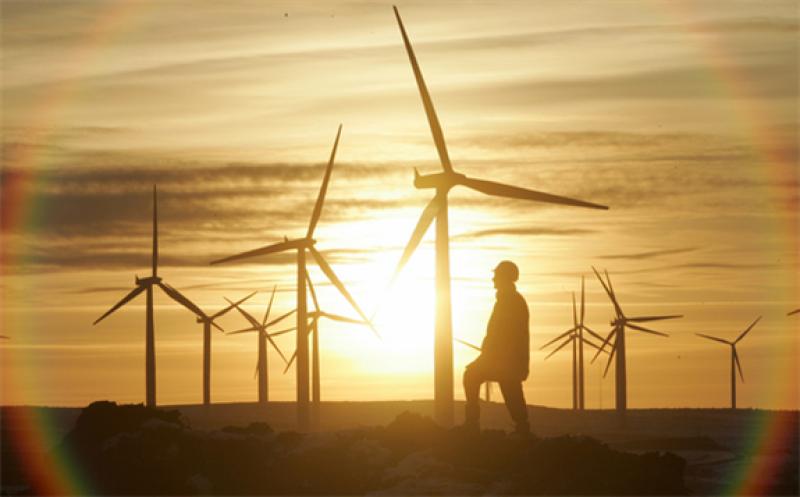But Global Wind Energy Council forced to revise its forecasts for 2020 and beyond as coronavirus fallout continues.

The wind power industry enjoyed its second biggest growth year in history in 2019, adding 60.4GW of new onshore and offshore capacity amid surging demand for clean energy worldwide, latest data from the Global Wind Energy Council (GWEC) has revealed.
New year-on-year wind farm capacity rapidly rose 19 per cent around the world last year, bringing total capacity of wind energy globally to over 651GW, according to the GWEC's annual update yesterday, although the group warned that growth was still not fast enough to meet international climate change goals and acknowledged recent momentum would undoubtedly be stalled by the escalating coronavirus pandemic.
The latest report reiterated that the biggest wind energy markets remain the US and China, which together accounted for 60 per cent of new onshore and offshore wind capacity additions last year, with India, Spain, and the UK making rounding out the top five.
While onshore wind continues to dominate the global market, there are signs that offshore wind is becoming an ever more important player in the renewables sector, with a record 6.1GW of new capacity added last year making up 10 per cent of last year's global wind power growth, the data shows.
Meanwhile, the growing number of wind farms around the world continues to be largely driven by financing via market based policy mechanisms, such as the UK's Contracts for Difference scheme, it seems. Clean power auctions worldwide were responsible for adding 40GW of capacity last year, double the figure in 2018 and making up two-thirds of total new capacity added, according to GWEC.
Ben Backwell, CEO at GWEC, said wind energy was continuing to enjoy consistent growth as a result of having "unequivocally established itself as a cost-competitive energy source worldwide".
"Established market players such as China and the US accounted for nearly 60 per cent of new installations, however, we see emerging markets in regions such as South East Asia, Latin America and Africa playing an increasingly important role in the years to come, while offshore wind is also becoming a significant growth driver," he added.
However, the latest data comes at a challenging time for the global economy as industries reel from the escalating coronavirus pandemic, amid significant uncertainties as to how long the lockdown in major economies such as the US, Europe, and China could last.
Energy analyst BloombergNEF has already downgraded its growth forecasts for the solar and battery sectors as supply chains are hit by the fallout from the pandemic, and the European wind industry is also braced for significant disruption in 2020.
GWEC, too, is therefore likely to downgrade its predictions for wind power in 2020. The trade association had expected to see yet another record year for wind energy growth in 2020, forecasting 76GW of new capacity added.
But it said that, although the full impact of Covid-19 on 2020 wind installations remains unknown, it would be revising its 2020-24 forecasts in light of the potential impacts on the global economy, with an update set for release in the summer.
In order to further boost wind energy growth in future, Backwell urged greater support from policymakers to ensure regulation and market design "is fit for purpose", and for developers to embrace growing opportunities in hybrid battery storage and green hydrogen.
"We are still not where we need to be when it comes to the global energy transition and meeting our climate goals," he warned. "If we are to have any chance at reaching our Paris Agreement objectives and remaining on a 1.5C pathway, we need to be installing at least 100GW of wind energy annually over the next decade, and this needs to rise to 200GW annually post-2030 and beyond. This will mean stronger measures to push incumbent fossil fuels off the grid and a shake-up of administrative structures and regulation to ensure we can go out and build."